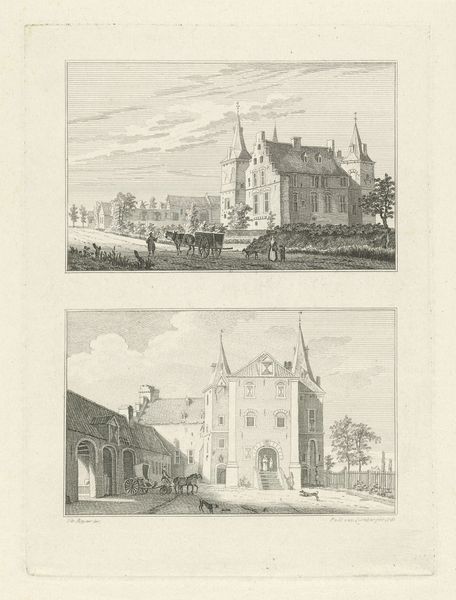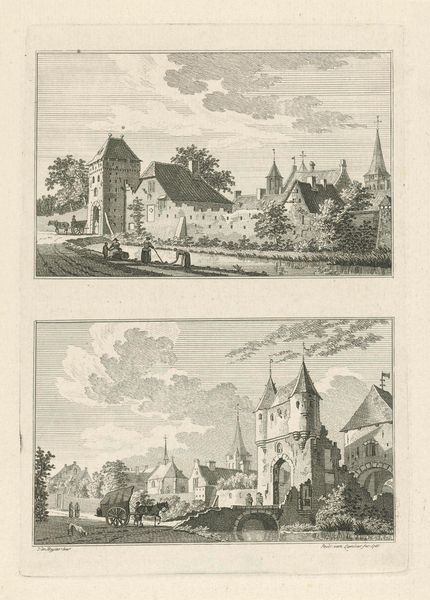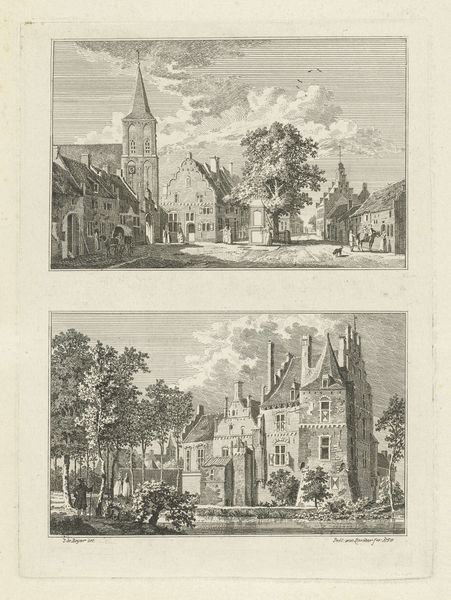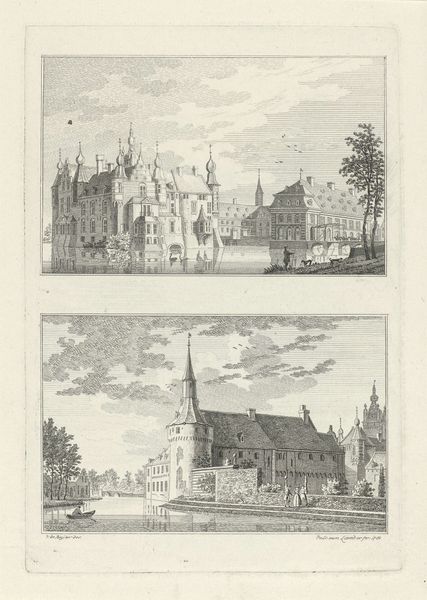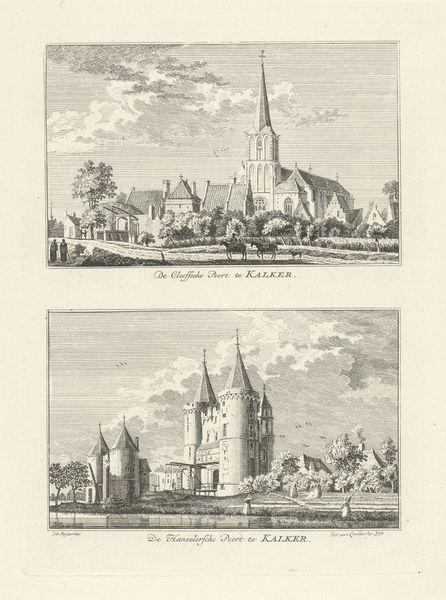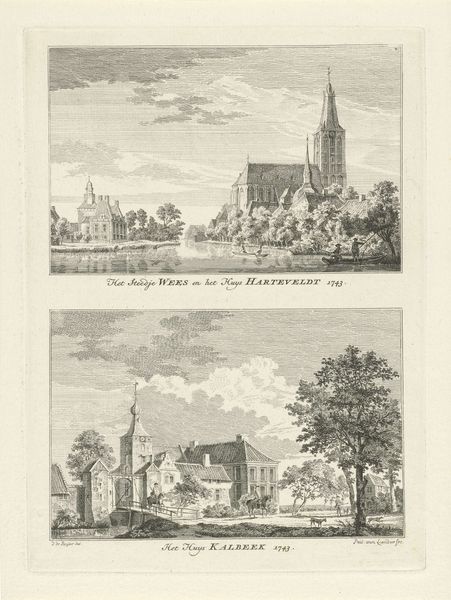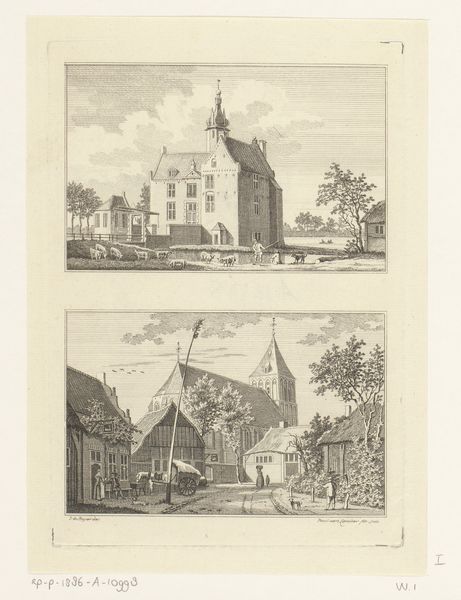
Dimensions: height 204 mm, width 148 mm
Copyright: Rijks Museum: Open Domain
Paulus van Liender made this print, Burch te Kervenheim, in 1743, using the technique of etching. The fine, precise lines are characteristic of the etching process, where the artist draws into a wax-coated metal plate with a sharp needle. The plate is then immersed in acid, which bites into the exposed lines, creating grooves that hold ink. The plate is then wiped clean, leaving ink only in the etched lines. When pressed onto paper, it produces an image with remarkable detail. This kind of printmaking played a crucial role in disseminating images and knowledge during the 18th century, offering a relatively affordable way to reproduce and share visual information. Here, the work is not just about the depicted architecture, but it is also about the skilled labor involved in the precise and meticulous etching process. It invites us to reflect on the value and importance of craft, challenging the distinction between fine art and the wider world of skilled trades.
Comments
No comments
Be the first to comment and join the conversation on the ultimate creative platform.
